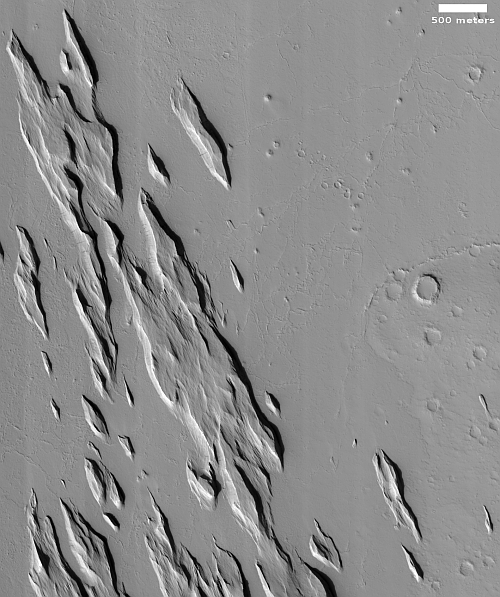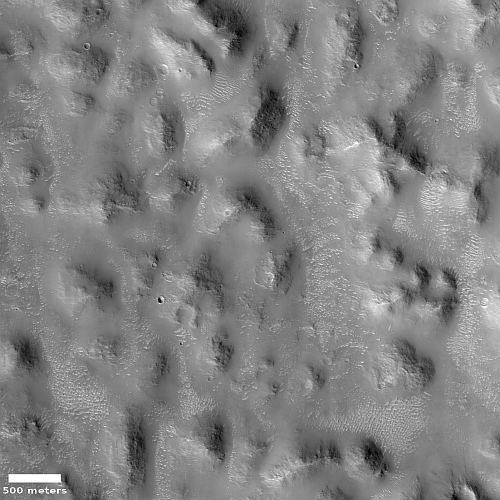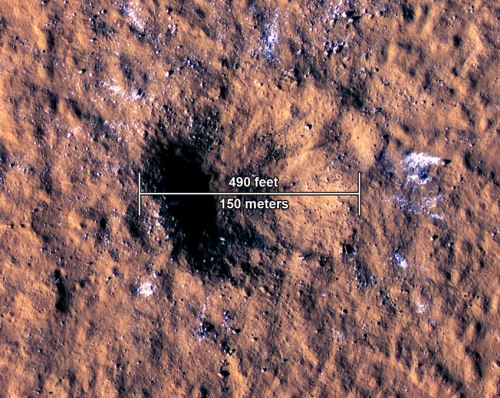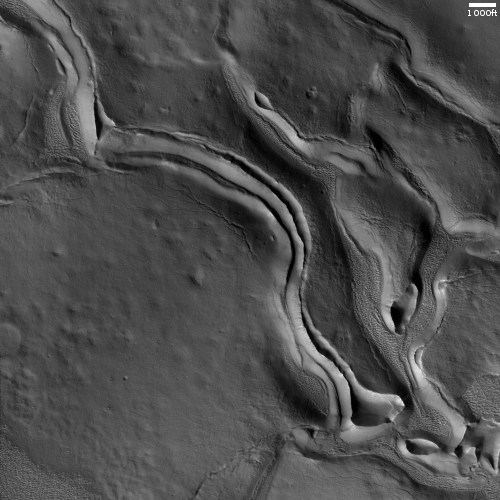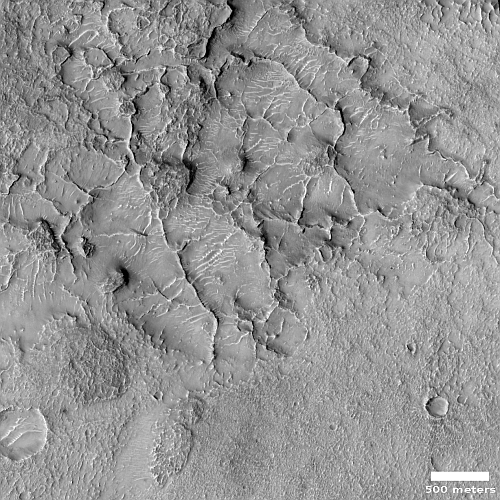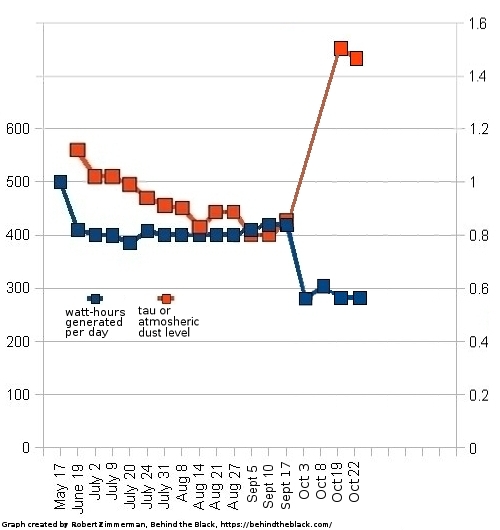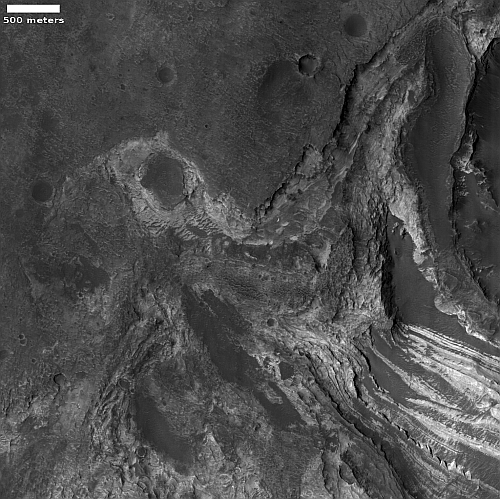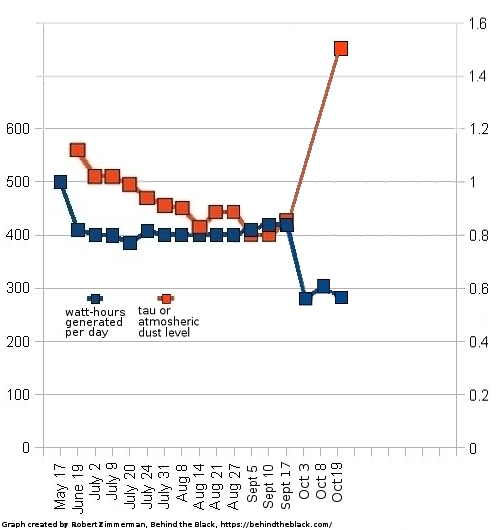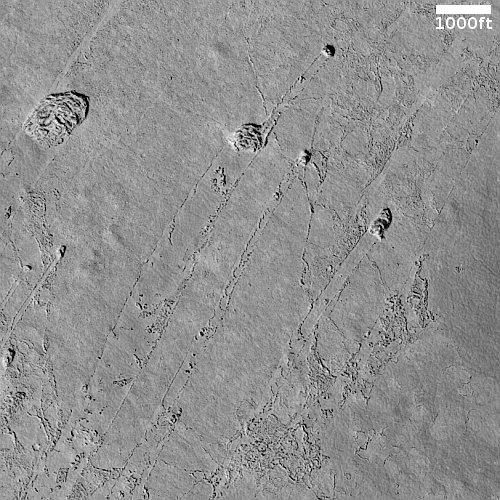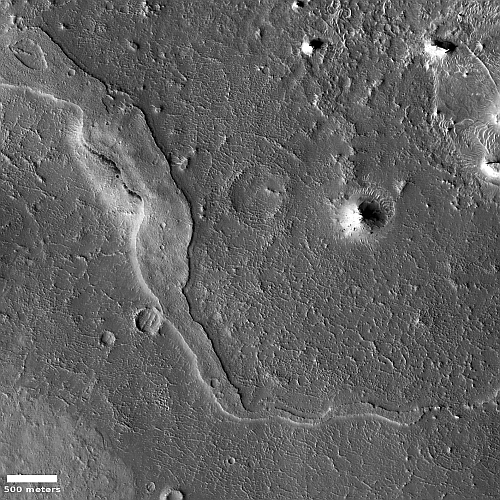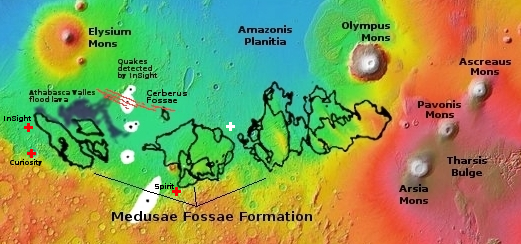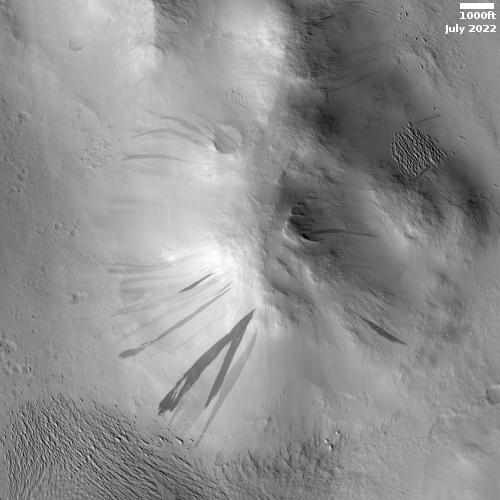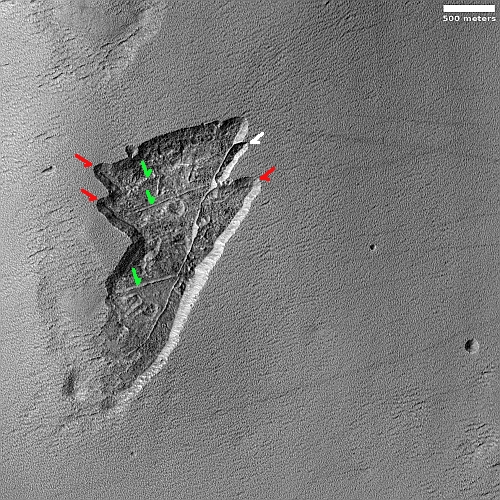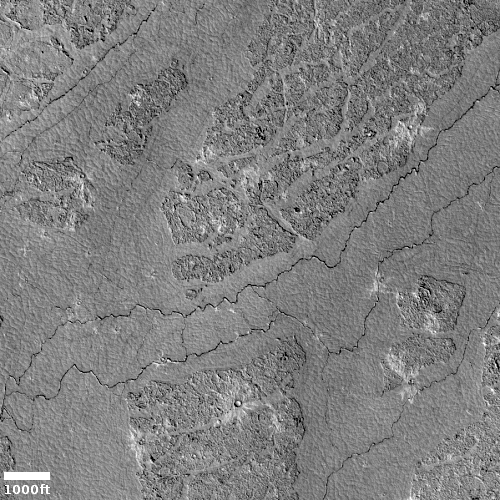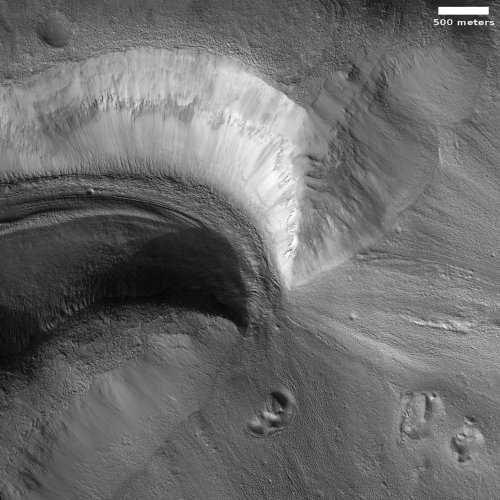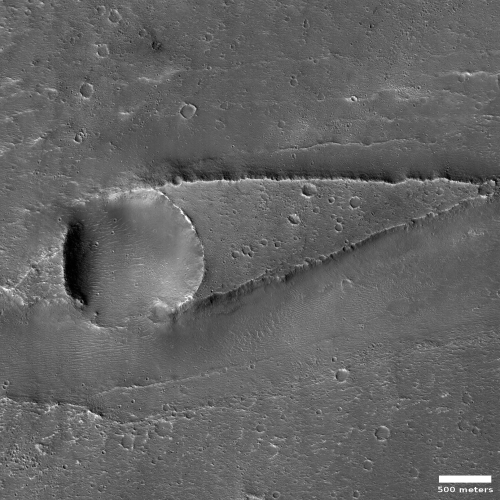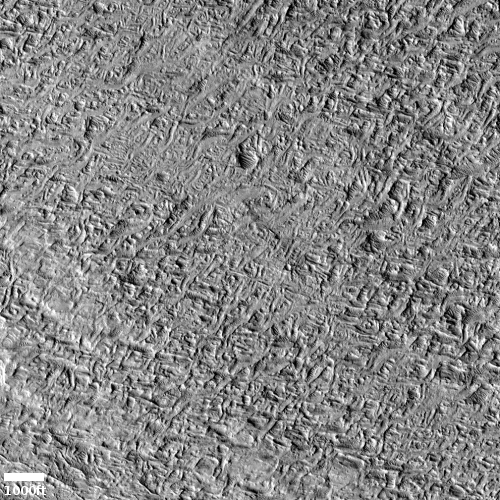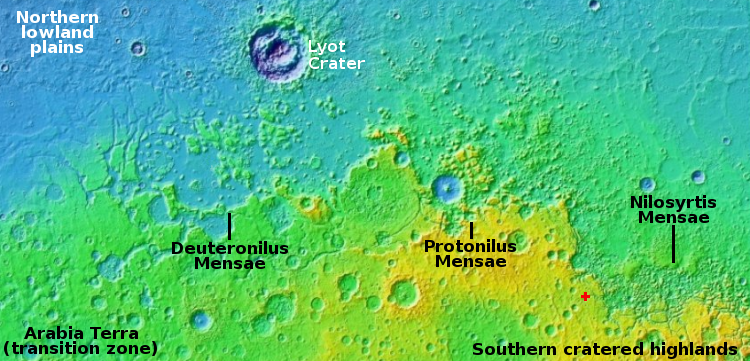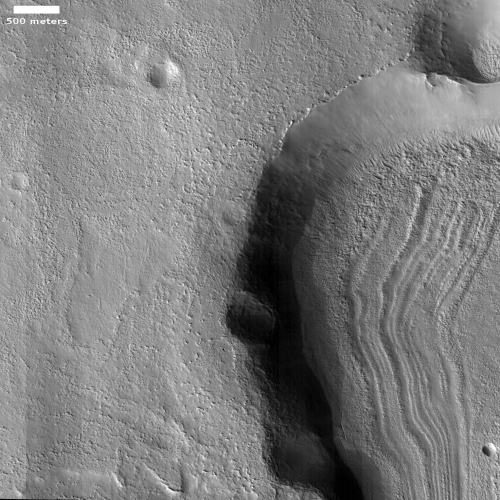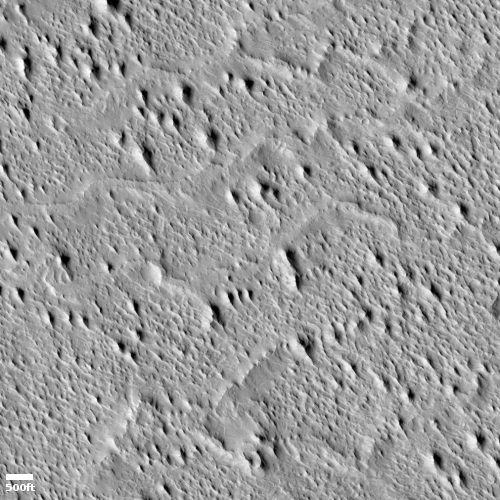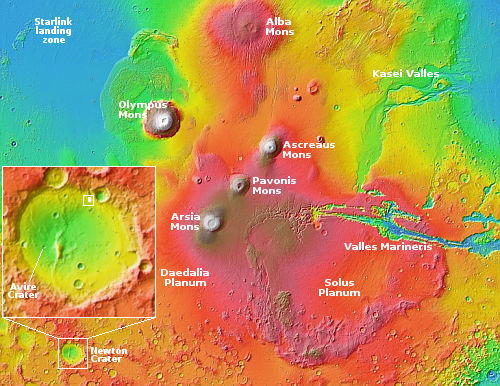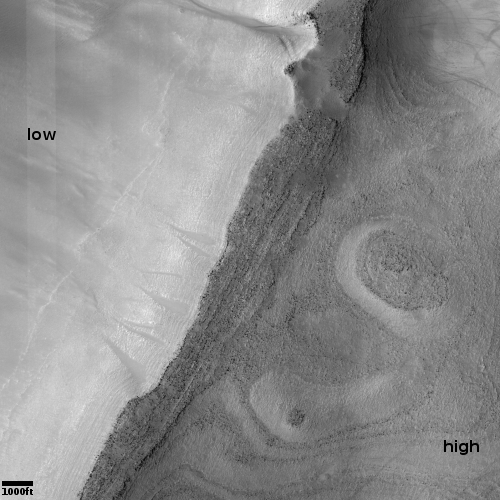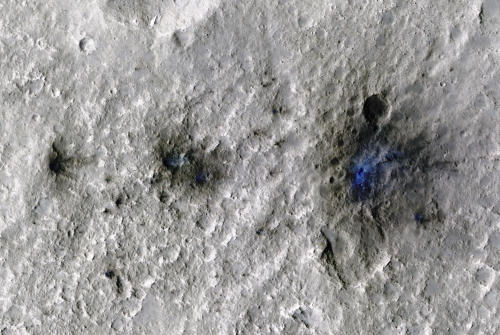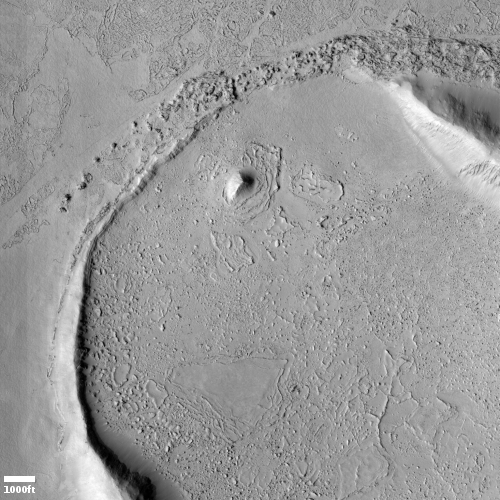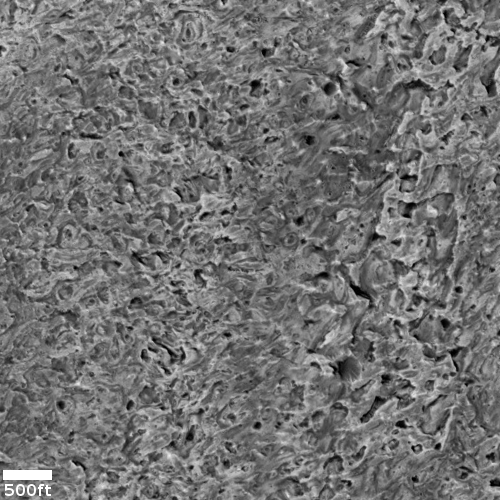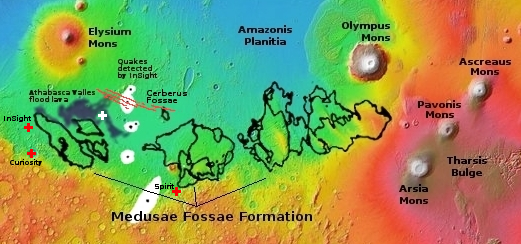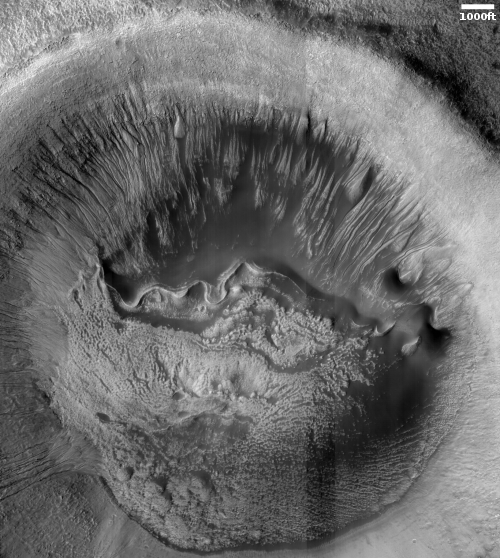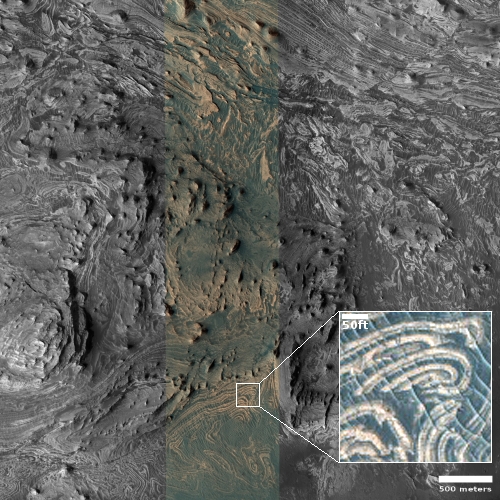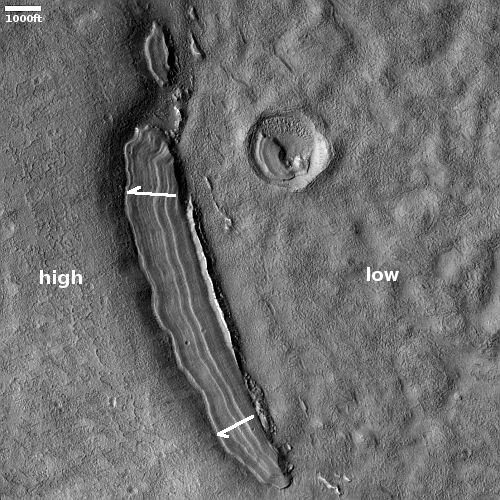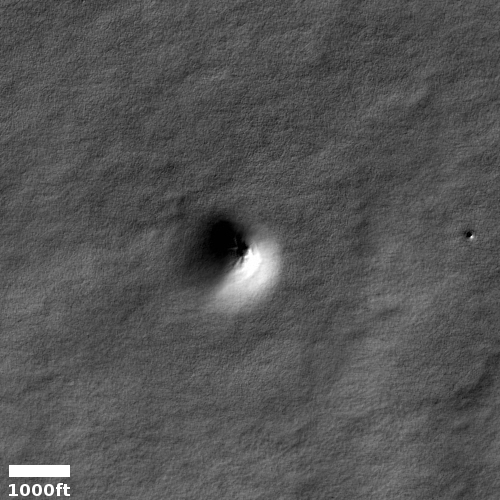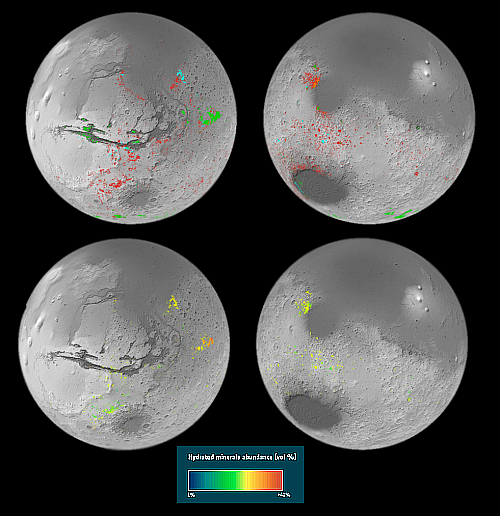Erosion at the edge of Mars’ biggest volcanic ash field
Cool image time! The photo to the right, rotated, cropped, reduced, and sharpened to post here, was taken on August 13, 2022 by the high resolution camera on Mars Reconnaissance Orbiter (MRO). It is another fine example of the wind-blown sculpted terrain that one finds routinely in Mars’ largest volcanic ash field, dubbed the Medusae Fossae Formation. About the size of India, this gigantic field is thought to be the source of most of the dust on Mars.
This particular location sits on the northernmost edge of that huge field. The elongated mesas mark the field’s edge, disappearing to the north but becoming thick and extensive to the south. The prevailing southeast-to-northwest winds have acted to clean most of the ash away.
We can get an idea about how deep and pervasive that field once was at this location by the pedestal crater in the middle right. Once, the floor of that crater was below the top of the ash field. At that time, the top of the dunes marked the general ground level across this entire image. Over time, the winds blew most of this material away, but the denser packed floor of the crater resisted that erosion, and thus now stands above the surrounding terrain.
The more normal-looking craters nearby could have occurred before the ash was deposited, or after it was blown away. The impact that created the pedestal crater however occurred when the ash covered everything here.
» Read more
Cool image time! The photo to the right, rotated, cropped, reduced, and sharpened to post here, was taken on August 13, 2022 by the high resolution camera on Mars Reconnaissance Orbiter (MRO). It is another fine example of the wind-blown sculpted terrain that one finds routinely in Mars’ largest volcanic ash field, dubbed the Medusae Fossae Formation. About the size of India, this gigantic field is thought to be the source of most of the dust on Mars.
This particular location sits on the northernmost edge of that huge field. The elongated mesas mark the field’s edge, disappearing to the north but becoming thick and extensive to the south. The prevailing southeast-to-northwest winds have acted to clean most of the ash away.
We can get an idea about how deep and pervasive that field once was at this location by the pedestal crater in the middle right. Once, the floor of that crater was below the top of the ash field. At that time, the top of the dunes marked the general ground level across this entire image. Over time, the winds blew most of this material away, but the denser packed floor of the crater resisted that erosion, and thus now stands above the surrounding terrain.
The more normal-looking craters nearby could have occurred before the ash was deposited, or after it was blown away. The impact that created the pedestal crater however occurred when the ash covered everything here.
» Read more

